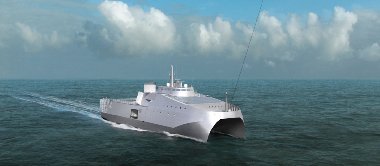GAMBET, M. Matthis (2021) Utilisation du flux adjoint dans les méthodes de réduction de variance pour les simulations Monte Carlo cinétiques PFE - Projet de fin d'études, ENSTA.
Fichier(s) associé(s) à ce document :
| PDF 1386Kb |
Résumé
Les simulations Monte Carlo sont des méthodes de résolution haute fidélité pour les problèmes de transport des neutrons. Les neutrons y sont modélisés particules par particules `a l’aide de tirages aléatoires. Dans le cas des problèmes cinétiques (dépendant du temps), cela implique la simulation de neutrons prompts et de noyaux précurseurs émetteurs de neutrons retardés (avec leurs échelles de temps de décroissance et de nombre de particules, différentes de celles des grandeurs caractéristiques des neutrons prompts). Ces simulations ont pour but de prédire les niveaux de puissance lors des transitoires, et notamment dans les cas accidentels qui sont actuellement traités par des méthodes déterministes. L’enjeu principal pour aboutir `a des calculs Monte Carlo rivalisant avec les calculs déterministes, est d’accélérer la convergence des simulations. Il est nécessaire: d’une part de réduire la variance de l’estimateur autour de la grandeur estimée pour améliorer la précision et réduire les efforts calculatoires, et d’autre part de maîtriser les populations de neutrons et précurseurs afin d’éviter la mort (dans les cas sous-critiques) ou l’explosion (dans les cas surcritiques) des populations. A ces fins, différentes méthodes sont mises en place qui biaisent la simulation en modifiant les régles du jeu Monte Carlo par rapport `a la physique tout en garantissant le non-biaisage du score. Par exemple les m´ethodes de collisions non branchantes, de décroissance forcée des précurseurs et de contrôle de population par combing ont été utilisées pendant ce stage. L’objet du stage a été d’améliorer cette dernière méthode en utilisant une fonction d’importance (méthode Importance combing ou IC) donnée par les quantités adjointes (flux adjoint pour les neutrons et concentrations adjointes pour les précurseurs). En faisant l’hypothèse du réacteur point, il est possible de calculer séparément forme spatiale (fournie par un code déterministe dans cette étude) et évolution temporelle (issue de la résolution des équations de la cinétique point par discrétisation temporelle) des quantités adjointes. Le flux adjoint ainsi obtenu est utilisé par un code Monte Carlo monocinétique maquette conçu `a l’IRSN pour les preuves de principes sur les méthodes de réduction de variance. L’implémentation actuelle de l’IC est coûteuse en temps de calculs et ne permet d’envisager, pour l’instant, que des calculs simples comme la résolution de transitoire sur une géométrie 1D homogène avec fuites. Les résultats obtenus sur cette géométrie ne permettent pas de mettre en exergue une modification significative de la variance au cours du transitoire. Ces résultats ne sont pas expliqués pour le moment mais pourraient être dus `a une fonction d’importance spatiale peu discriminante (car en forme de cosinus). Toutefois, la méthode est non biaisée et produit des résultats cohérents avec ceux des simulations utilisant le combing uniquement. Par ailleurs le stage a permis de soulever un questionnement au sujet des barres d’incertitude dans les méthodes de Monte Carlo cinétiques. Les barres d’incertitude sont définies par rapport à une distribution gaussienne de l’estimateur Monte Carlo. Le caractère gaussien de cette distribution est assuré par le théorème central limite. Ce dernier permet de quantifier le risque pris `a situer la valeur recherchée dans l’intervalle de confiance représenté par les barres d’incertitude. Or l’étude a permis d’observer des simulations d’un même système physique menant `a des intervalles de confiance ne se recouvrant pas. Cela semble indiquer que le théorème central limite n’est pas applicable dans le cas des simulations Monte Carlo cinétiques et demande de reconsidérer l’incertitude sur les résultats.
| Type de document: | Rapport ou mémoire (PFE - Projet de fin d'études) |
|---|---|
| Sujets: | Mathématiques et leurs applications Physique, optique |
| Code ID : | 9008 |
| Déposé par : | Matthis GAMBET |
| Déposé le : | 23 nov. 2021 10:06 |
| Dernière modification: | 23 nov. 2021 10:06 |








